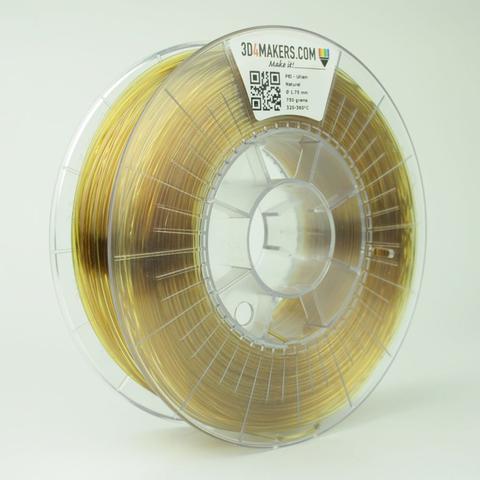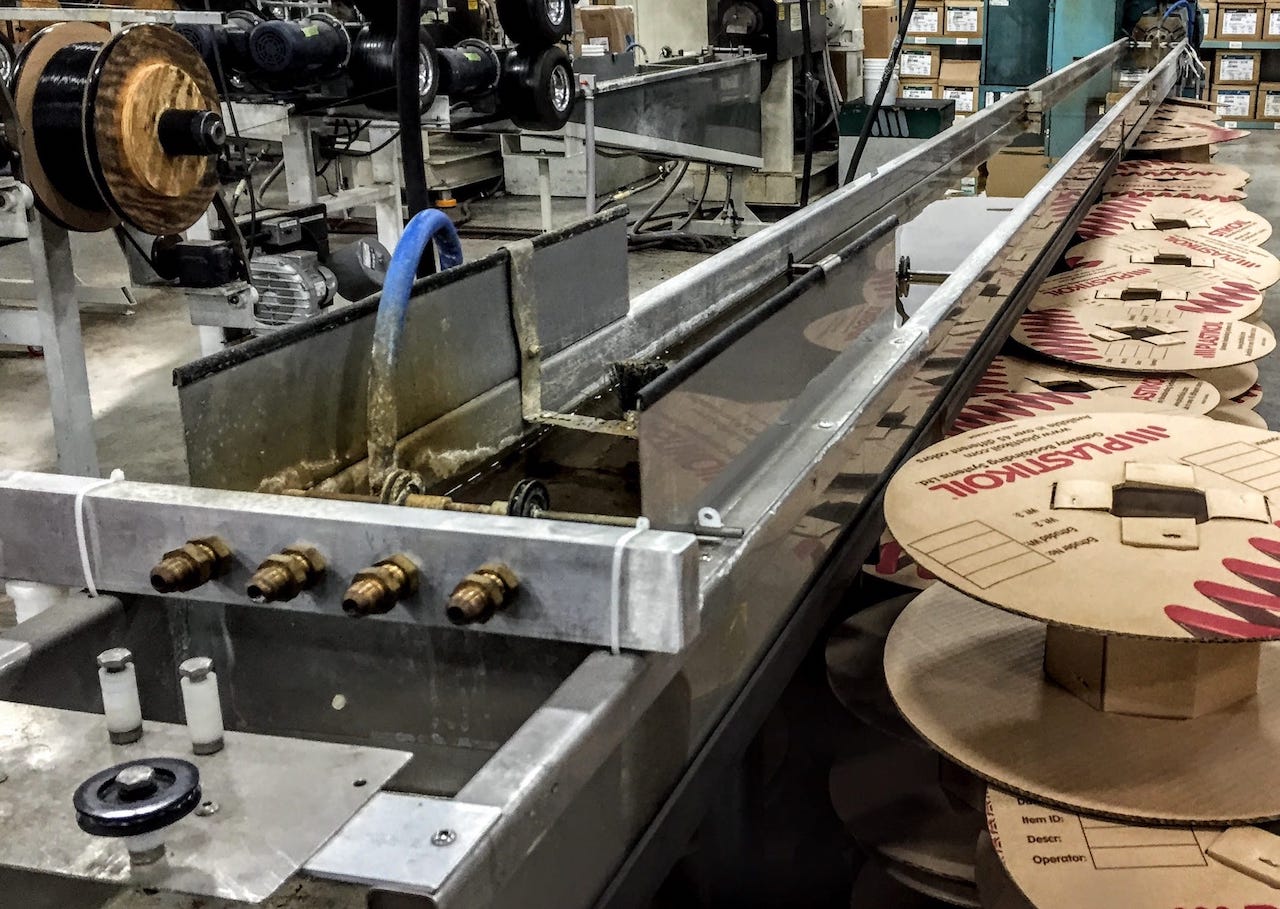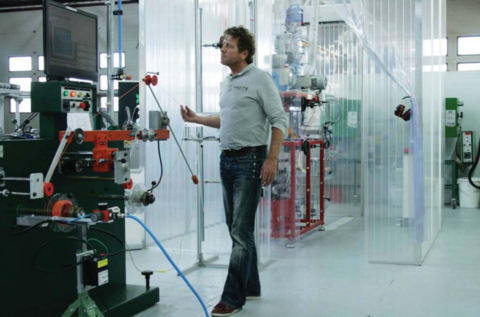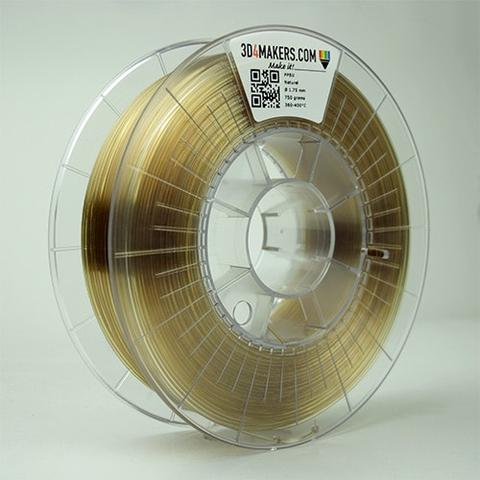
Netherlands-based 3D4Makers seems to have broken through a major barrier to producing unusual 3D print filaments in engineering materials with a new production system.
The secret to their venture is a new filament extrusion system that differs significantly from typical filament production operations.
But let’s see how most filament production is done.
Most filament production is accomplished by precisely melting high-grade plastic pellets and pushing the soft plastic through a precision nozzle. But the two most important aspects of the production occur after this relatively easy stage.

To achieve a consistently shaped and constant diameter filament, the production system must carefully adjust both the speed of the plastic flow and the temperatures.
If the speed is too high, the filament becomes thin; too slow and it’s fat. Varying speed results in varying diameter.
This happens because the filament is soft as it emerges from the extrusion nozzle because it’s still hot. The idea is to very precisely cool the plastic after it emerges to maintain shape and diameter.
Typically this cooling is accomplished with a rather large water trough through which the filament passes. The water is kept at very precise temperatures that ensures success.

But therein lies the problem: the completed filament must pass through water, and many 3D printable plastics tend to absorb water. For typical non-3D print applications, this is entirely suitable. But 3D printing is different, because the plastic must be re-softened during printing.
When re-heated, the absorbed water will boil and corrupt the printing process, leading to lousy surface finish, poor bonding, or even jammed extruders.
To avoid this scenario, all typical filament manufacturers must bake the newly completed filament for many hours to extract the absorbed moisture, or at least most of it.

But now 3D4Makers has turned this process sideways by developing a new type of filament extruder that does not require water cooling! Instead the new device uses carefully positioned high-pressure air-jets to solidify the softened plastic in a way that ensures very precise shape and diameter, without any absorbed moisture. At no stage in production does water come in contact with the plastic, allowing an operator to merely bake the input pellets once to permanently eliminate all absorbed water.
3D4Makers says that the process results in filament with superior 3D printing characteristics:
We found that in layer adhesion of 3D printed parts is improved because of our production process. This means that you will get better and stronger 3D printed parts with 3D4Makers filament as compared to any other filament supplier. The same grade of PLA from the same plastics vendor will print into stronger 3D prints if we turn it into filament. Parts 3D printed with our materials also exhibit higher impact resistance than parts made from other filaments.
There are other benefits to this process:
Due to our unique production process, and extensive polymer knowledge we can also make 100% materials. 100% materials are filaments that 3D print but have no additives in the material. No plasticizers for example. Our materials are also ionised and many have food contact approval and are biocompatible or biodegradable.
But what’s really interesting about this extrusion system is that it will permit the production of filament made from materials that would otherwise be impossible or challenging with water-based systems.
To that end, 3D4Makers has begun producing a series of unusual materials that should significantly widen the types of materials available to designers.

One of their new materials is PCL (polycaprolactone), which I speculated last year someone might attempt to make. They’ve also developed filaments in PPSU, PEI, PEEK and others, and I expect them to produce many more. In addition to these, the company also markets PLA, ABS, ASA, PLLA, PET-G and Hemp filaments.
These materials have engineering properties far different from the typical ABS and PLA used on most filament-based 3D printers. Recently I’ve seen a new wave of machines that have the ability to deal with more unusual materials, many of which require far higher extrusion temperatures. Now those machines could have many new materials to explore.
Will other filament producers shift to air-cooled production systems? I think that could be problematic, because 3D4Makers doesn’t appear to be remarketing their device to other firms, at least not at this time. This leaves the other producers with the prospect of developing their own air-cooled equipment, or repurposing other manufacturing equipment.
For the moment, 3D4Makers may have a significant advantage in filament production.
Via 3D4Makers

